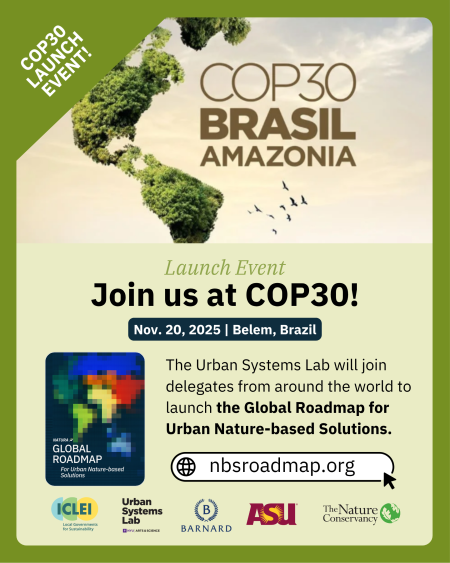Image:

This session highlights the potential of urban nature-based solutions while launching the NATURA Global Roadmap for Urban Nature-Based Solutions, the first global assessment of its kind on urban nature-based solutions. Drawing on research from all world regions, it identifies barriers, enablers, and pathways to scale NbS for sustainable, inclusive, and climate-resilient cities. Learn more!
Speakers
- Timon McPhearson (New York University)
- Loan Diep (New York University)
- Mairi Dupar (ODI GLobal)
- Xiye Bastida (Re-Earth Initiative)
- Nathalie Seddon (Oxford University)
- Cynnamon Dobbs (University of the Andes)
- Pippin Anderson (University of Cape Town)
- Rob McDonald (The Nature Conservancy-Europe)
- Eduardo Brondizio (University of Indiana)
- Najma Mohamed (UNEP-WCMC and NetworkNature)
Leading Institutes
- Future Earth Urban KAN
- New York University
Languages:
English